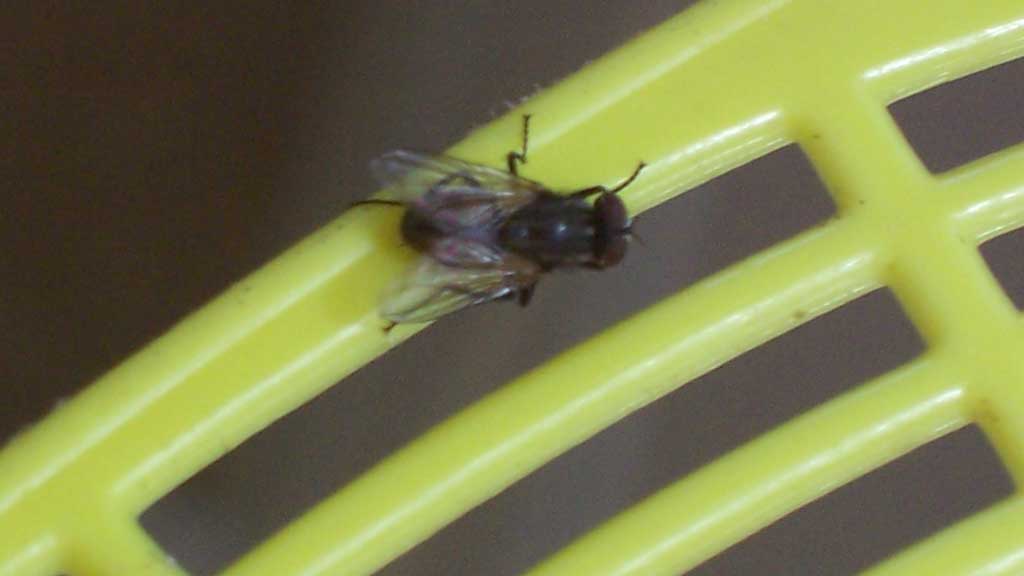If you’ve ever tried to swat a fly with your hand or with a book, you’ve probably found that the pesty insect takes off before you can strike it.

Flies have sensory hairs over their bodies, and these hairs can feel slight changes in air pressure. A moving hand pushes the air down on the fly, and the insect’s hairs pick up the change in air pressure and alert it to take off.
What makes a fly swatter work is not its shape or its strength, but the holes in it. When you swing a fly swatter, air passes through the holes, and not enough air is pressed downward on the fly to alert it.
